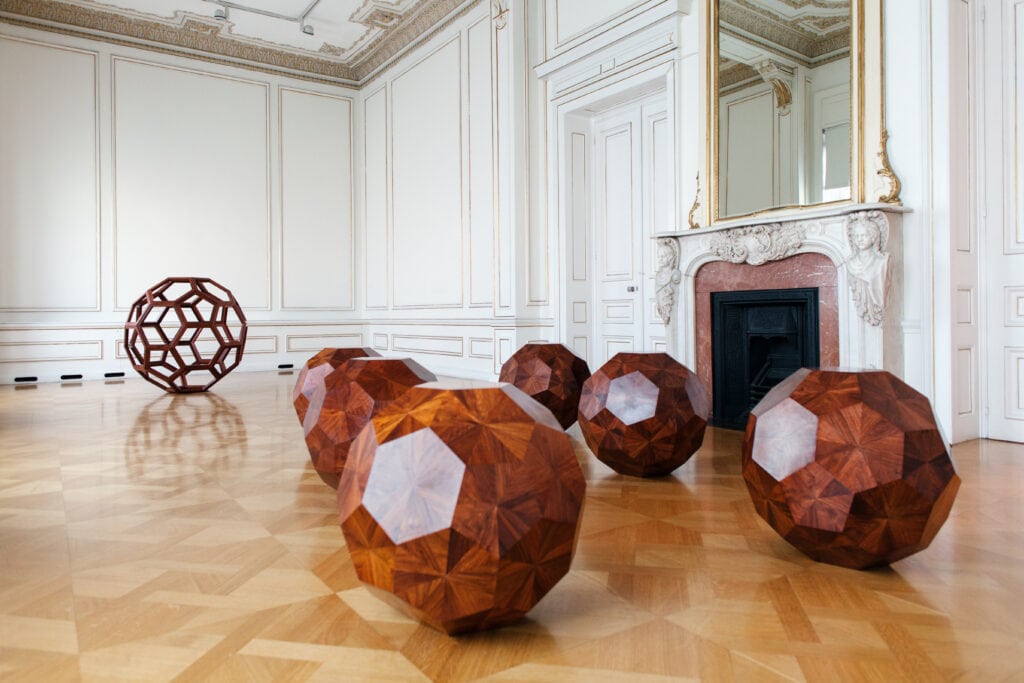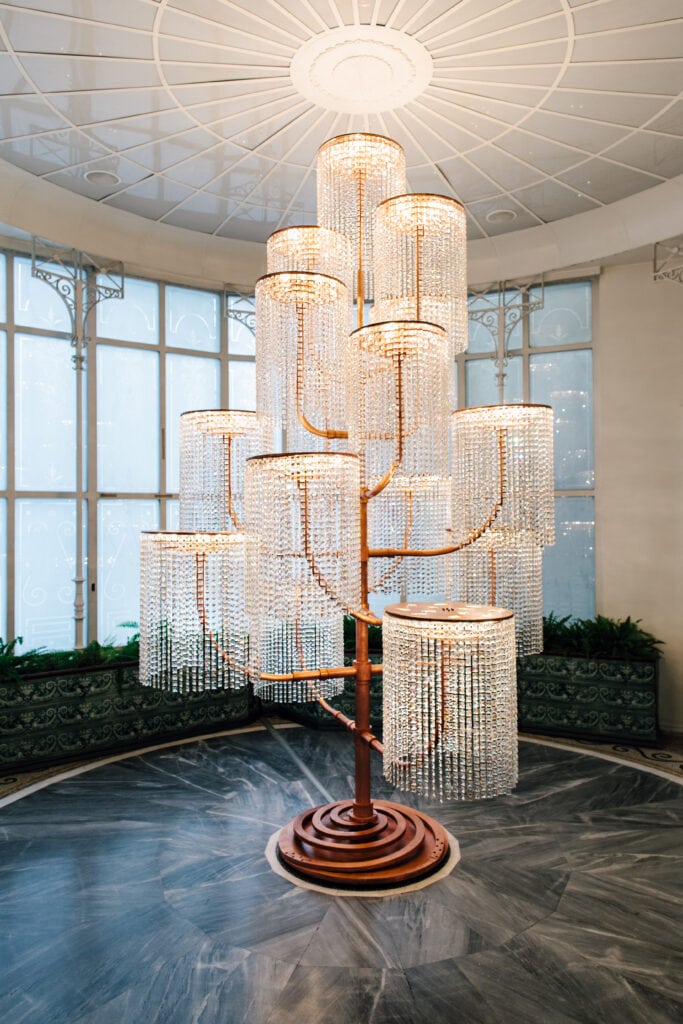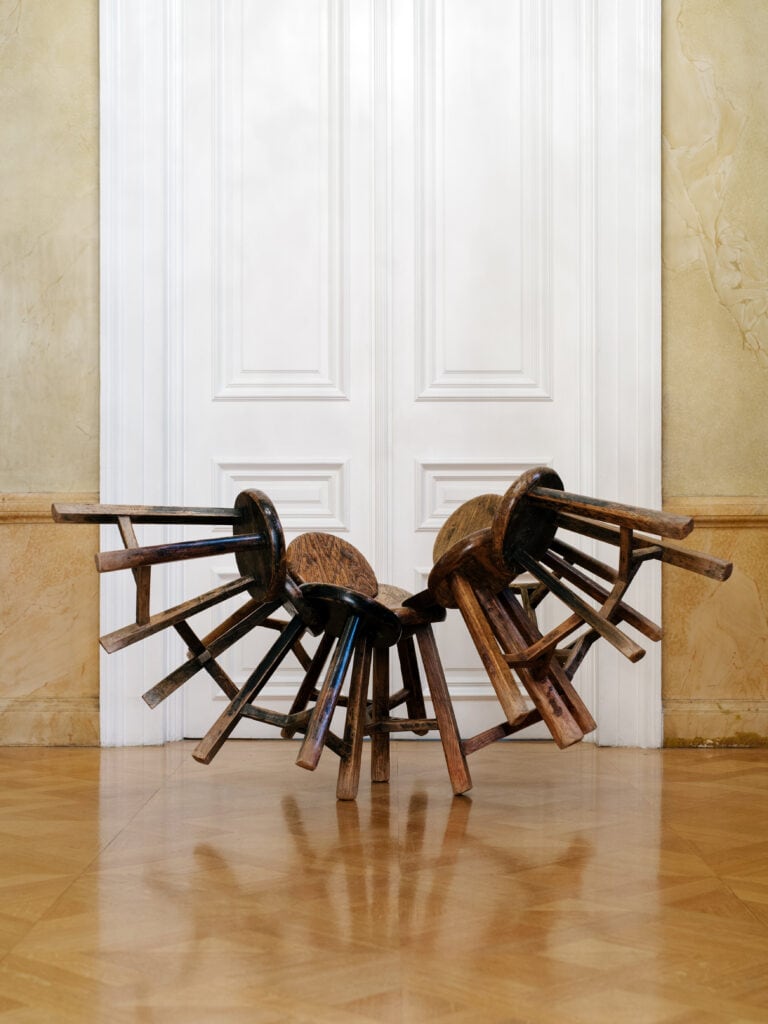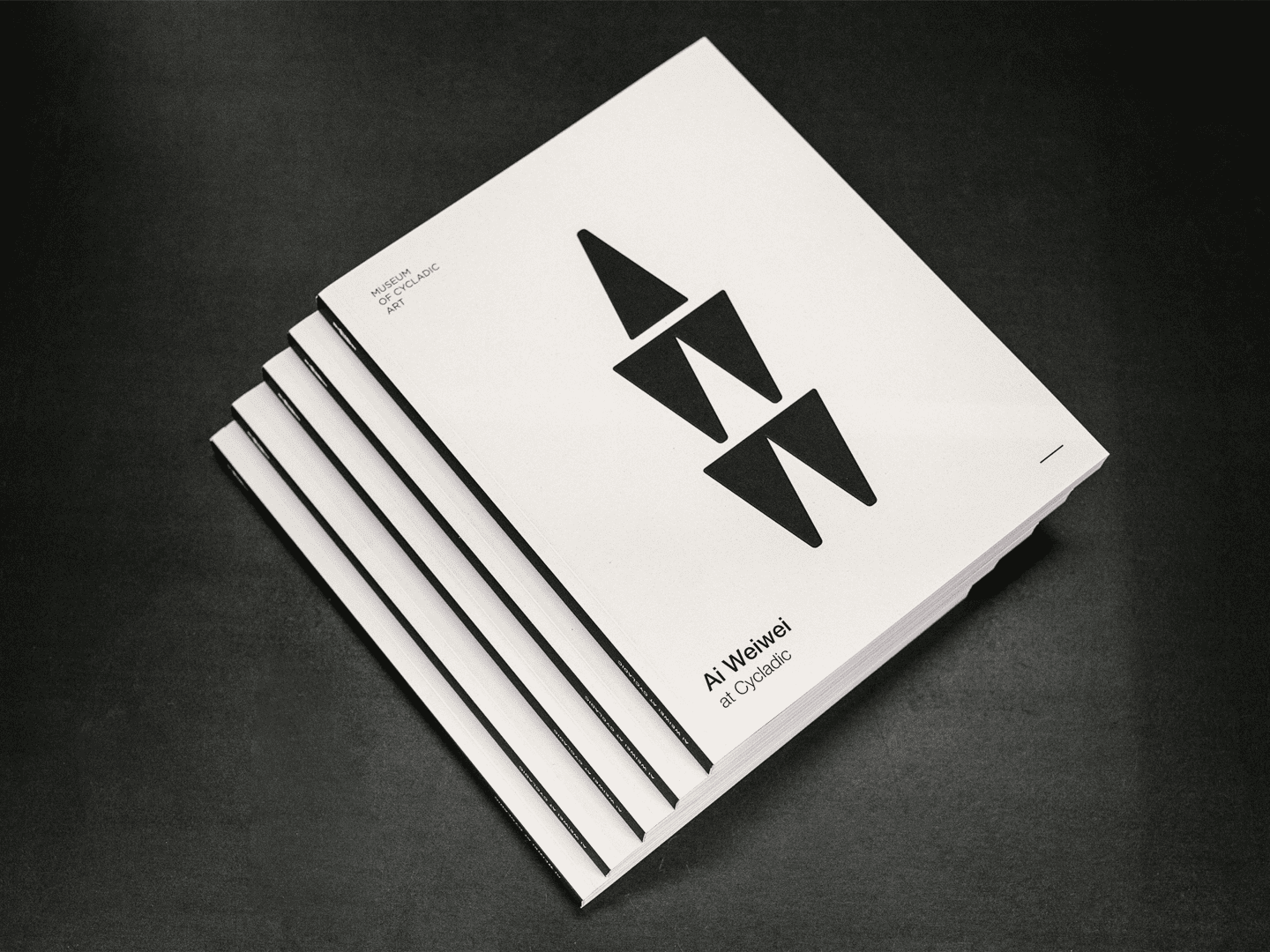Ai Weiwei at Cycladic
CONTEMPORARY ART
MAY 20 UNTIL OCTOBER 30, 2016

THE EXHIBITION
The exhibition, which was extended to both wings of the Museum, introduced Ai’s practice to the Greek audience through some of his most canonical works focusing on his recurring use of particular materials which draw parallels with Greek art counterparts, such as wood and marble.
Among the new works created for the show was Standing Figure (2016), a life-size sculpture made entirely out of marble which alludes to marble figurines of the Spedos variety, a style prevalent in the Early Cycladic period (2800-2300 BC). In a personal interpretation of Cycladic art, Ai has augmented the scale, thus transforming the modest Cycladic figurine into a towering deity. In reference to his own infamous triptych of photographs Dropping a Han Dynasty Urn (1995), the sculpture has outstretched arms and a vessel hovering below, alluding to the destruction of Chinese antique objects that took place during the Chinese Cultural Revolution (1966-1976).
The exhibition highlighted also his most recent activities from the months that he spent in Greece documenting the refugee crisis. Following an invitation by the Museum of Cycladic Art in December 2015, Ai travelled to the Greek island of Lesvos to document the unfolding refugee crisis, at a time when the crisis was at its peak. As he stated shocked: “When you see the people arrive, it’s hard to describe the feeling – it’s like when you cut your skin and you see your blood run out. You see the wound and the fresh blood. And you see that the wound will never heal because there is no intention to heal it, so the blood keeps flowing and people just mess with the blood without any intention to stop it”.
A number of new works created in response to his time in Lesvos were displayed throughout the Museum, such as his marble Tyre (2016) and Zodiac Boat (2016) which convey the perils and poor living conditions that hundreds of thousands of refugees are suffering. Ai applies, in this case too, his method of elevating everyday objects to iconic status with items that have become synonymous to the refugee crisis.
In addition, for the first time works by the Chinese artist were displayed among the Museum’s permanent collections, highlighting the way in which contemporary art can converse with artefacts from the past. Tear Bottle/Tear Gas Canister (2016), is a clear political statement: gas canisters used by the FYROM police against the refugees are placed alongside ancient tear bottles, delicate vessels which were used to collect the tears of mourners. The comparison between the tear gas canister and the tear bottle is haunting, one is used to induce tears whilst the other collects them. One is a totem of humanity, whilst the other symbolises a complete loss of it.
Responding to the needs that had arisen during the refugee crisis at the time, the Museum of Cycladic Art donated part of all exhibition proceeds to two NGOs; Médecins Sans Frontières (MSF) and the Greek NGO METAdrasi.
THE ARTIST
Born in Beijing in 1957, Ai Weiwei is one of the most significant and outspoken artists to emerge from China in recent decades. As an artist, architect, writer, filmmaker and political activist, he has been highly and openly critical of the Chinese government’s stance on democracy and human rights. He has investigated government corruption and cover-ups, as well as the quality of human life in modern-day China. In 2011, following his arrest at Beijing Capital International Airport on 3 April, he was held for 81 days without any official charges being filed; officials alluded to their allegations of “economic crimes”. Upon his release, he was prohibited from traveling abroad, engaging in public speech, and was subjected to continued government surveillance. His passport was eventually returned to him in 2015.
Ai Weiwei is best known for his sculptures and large-scale installations, which conceptually marry traditional Chinese craft and modes of thought with contemporary political messages. In his sculptural works he often uses reclaimed materials such as ancient pottery, wood from destroyed temples, marble and jade, uniting past and present; the old China and the new. As well as engaging in many long-term research projects such as his ‘Citizens’ Investigation’ into the Sichuan Earthquake victims in 2008, Ai also served as artistic consultant on the design of the National “Bird’s Nest” Stadium for Beijing’s 2008 Olympics and has had major exhibitions and pavilions all around the world.
INSTALLATION
EXHIBITION CATALOGUE
Catalogue of the exhibition including texts by the exhibition curator Michael Frahm, as well as from the art curators N. Argyropoulou and Chr. Marinos. Moreover, an interview of the artist and all the exhibition works with explanatory texts.
Curated by
Exhibition Management
Exhibition team
Technical Support
Translations
Graphic Design
Gold Sponsor
Supporters
Ballian Techniki S.A.
Social Partner
Hospitality Sponsor
Official Air Carrier Sponsor
Product Sponsor
BECOME
FRIENDS





